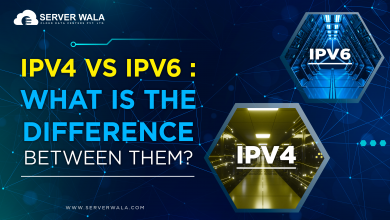Cloud-based Data Centre Infrastructure Management (DCIM): An Overview

Introduction
In the rapidly evolving landscape of data center management, the advent of Cloud-based Data Centre Infrastructure Management (DCIM) is ushering in a new era of efficiency and flexibility. As organizations grapple with the complexities of managing their data center resources, cloud-based DCIM emerges as a game-changer, offering advanced tools and solutions to streamline operations and optimize resource utilization.
What is DCIM Software?

DCIM Software, short for Data Centre Infrastructure Management, is a comprehensive suite of tools designed to monitor, manage, and optimize the myriad components within a data center. This encompasses everything from web servers & power distribution units to cooling infrastructure. The primary goal of DCIM software is to enhance operational efficiency, improve resource utilization, and offer real-time data on the functioning of data center system.
The Goals of DCIM

Greater Visibility:
- Obtain real-time information into the functioning and data center components’ health.
- Watch & track resource usage to identify bottlenecks and optimize workflows.
- Gain comprehensive visibility across physical and virtual infrastructure for holistic management.
Optimized Resource Allocation:
- Dynamically assign resources according to the demand as well as workload necessities.
- Utilize predictive analytics to forecast resource needs and prevent over-provisioning.
- Implement efficient load balancing strategies to ensure optimal utilization of assets.
Reduced Energy Consumption:
- Implement power management tools to look after energy utilization and recognize inefficiencies.
- Utilize temperature and humidity sensors to optimize cooling systems and reduce energy waste.
- Implement power capping and scheduling to minimize energy consumption during off-peak hours.
Enhanced Reliability:
- Implement active monitoring as well as alerting to recognize & acknowledge probable problems before they affect operations.
- Execute disaster recovery & failover mechanisms to assure constant accessibility of vital services.
- Conduct regular maintenance and performance tuning to maximize the reliability and uptime of infrastructure components.
Preparing for the future with cloud-based DCIM

As organizations navigate the complexities of an ever-evolving digital landscape, the imperative to future-proof data center operations has become more pressing than ever. In response to this challenge, many enterprises are turning to Cloud-based Data Centre Infrastructure Management (DCIM) solutions as a strategic means of preparing for the future. The dynamic and scalable nature of the digital environment necessitates a shift toward cloud-based DCIM, offering businesses the flexibility to scale resources on-demand. This adaptability not only accommodates the unpredictable nature of workloads but also ensures that organizations can seamlessly adjust to evolving technological demands.
One key aspect driving the adoption of cloud-based DCIM is its inherent capability for remote management. In an era where geographic boundaries are increasingly irrelevant, cloud-based DCIM allows organizations to monitor and manage their data center infrastructure from any location with internet access. This not only facilitates the centralization of monitoring and management tasks but also fosters collaboration among teams operating in different geographical locations. The ability to manage data center resources remotely enhances agility, enabling IT teams to respond promptly to incidents, perform maintenance tasks, and make informed decisions without the constraints of physical presence.
Furthermore, the seamless integration of cloud-based DCIM with other cloud services and platforms plays a pivotal role in future-proofing data center operations. The ability to create a unified IT environment through integration allows for improved data exchange and interoperability between on-premises & cloud-based systems. Application Programming Interfaces (APIs) and automation tools enable the streamlining of workflows, enhancing operational efficiency, and positioning organizations to meet the challenges of an evolving technological landscape. As organizations strive to stay agile and responsive, Cloud-based DCIM emerges as a strategic investment, providing the adaptability and tools necessary to thrive in the digital future.
Stacking up the benefits of cloud-based DCIM
In assessing the advantages of Cloud-based Data Centre Infrastructure Management (DCIM), a multifaceted array of benefits comes to the forefront, reinforcing the strategic significance of embracing this innovative approach. Foremost among these advantages is the inherent cost-effectiveness that cloud-based DCIM brings to the table. By discarding the requirement for upfront system investments, entities can significantly lessen capital expenditure. Further, the model of pay-as-you-go guarantees that businesses only incur pricing based on the actual resources consumed, optimizing budget allocation and providing a scalable financial model.
The scalability inherent in cloud-based DCIM emerges as a pivotal benefit, allowing organizations to effortlessly adjust their resources in response to changing business requirements. This flexibility extends beyond mere resource provisioning; it enables seamless adaptation to growth, accommodating fluctuations in workloads without disruption to operations. Leveraging the global infrastructure of cloud providers further enhances scalability, enabling resources to be deployed closer to end-users for improved performance and user experience.
Enhanced accessibility stands out as another compelling advantage of Cloud-based DCIM. The ability to access vital data & management tools from any site with an internet connection promotes collaboration and responsiveness. This accessibility breaks down geographical obstructions as well as empowers teams to make informed decisions and respond promptly to evolving circumstances. The improved accessibility offered by cloud-based DCIM fosters a collaborative environment, enabling organizations to operate more dynamically in an interconnected and globalized business landscape.
On-premises vs. Cloud-based DCIM
On-Premises DCIM:
Control and Customization:
- Offers a high level of control over the entire data center infrastructure.
- Permits for comprehensive customization to fulfill particular institutional necessities.
Security and Compliance:
- Provides direct oversight of security measures and compliance protocols.
- Enables organizations to have physical control over their infrastructure, enhancing security.
Upfront Investment:
- Requires considerable upfront investment in hardware, software, & equipment.
- Capital expenditure includes costs for maintenance, upgrades, and physical space.
Cloud-Based DCIM:
Flexibility and Scalability:
- Unparalleled flexibility, permitting entities to scale web resources as they like.
- Adaptable to changing workloads, promoting efficient resource utilization.
Cost-Effectiveness:
- Reduces upfront infrastructure costs, as the cloud provider manages hardware and infrastructure.
- Functions on a pay-as-you-go model, optimizing budget allocation according to the real resource consumption.
Rapid Scalability:
- Enables rapid scalability to meet growing business needs.
- Resources are provisioned or de-provisioned prompted without physical constraints.
On-Premises vs. Cloud-Based DCIM Comparison:
| Criteria | On-Premises DCIM | Cloud-Based DCIM |
| Control and Customization | High level of control; Extensive customization | Flexible control; Customization within provider limits |
| Security and Compliance | Direct oversight; Physical control | Relies on cloud provider’s security measures |
| Upfront Investment | Significant upfront costs for hardware, etc. | Reduced upfront costs; Pay-as-you-go model |
| Flexibility and Scalability | Limited scalability; Rigid infrastructure | Unparalleled flexibility; On-demand resource scaling |
| Cost-Effectiveness | Higher upfront costs; Ongoing maintenance | Lower upfront costs; Pay for actual resource consumption |
| Rapid Scalability | Limited by physical constraints | Quick resource provisioning and de-provisioning |
The DCIM industry is undergoing new trends
1. IT and OT convergence
The convergence of Information Technology & Operational Technology is a prominent trend in the DCIM industry. This integration facilitates a holistic approach to data center management, aligning IT processes with the broader operational goals of the organization.
2. Infrastructure-As-Code
Infrastructure-As-Code (IaC) is revolutionizing how data centers are managed. By codifying infrastructure configurations and automating deployment processes, IaC enhances efficiency, reduces errors, and accelerates the pace of innovation within data center environments.
3. Systemic facilitator – on the path to synergy
DCIM is evolving into a systemic facilitator, driving synergy between various components of data center infrastructure. This holistic approach ensures that different elements work seamlessly together, optimizing overall performance and contributing to the organization’s success.
How Serverwala Accelerates Cloud Migration?

Serverwala is a reliable partner in cloud migration, offering tailored solutions, robust infrastructure, security, scalability, and ongoing support to help businesses navigate the complexities of cloud adoption with confidence.
Consultation Expertise:
Serverwala provides thorough consultation services, tailoring cloud migration strategies to align with each business’s unique goals and needs.
Customized Cloud Solutions:
Leveraging extensive expertise, Serverwala delivers bespoke cloud solutions optimized for resource utilization, operational efficiency, and seamless integration.
Robust Infrastructure:
Serverwala’s cutting-edge infrastructure ensures a secure and reliable environment, capable of handling diverse workloads and applications.
Scalability and Flexibility:
Recognizing dynamic business needs, Serverwala offers scalable solutions, allowing organizations to adjust resources based on demand.
Advanced Security Measures:
Serverwala prioritizes security with encryption, firewalls, and regular audits, ensuring data protection and compliance.
Seamless Migration Process:
Serverwala executes a meticulous migration process, minimizing downtime and ensuring a smooth transfer of applications and data.
24/7 Technical Support:
With round-the-clock support, Serverwala addresses queries, resolves issues, and ensures continuous operation of cloud services.
Cost Optimization Strategies:
Serverwala employs cost-effective measures, including effective resource allocation and monitoring, to optimize cloud migration expenses.
Also Read: The Future of Cloud Computing: Underwater Data Centers
Conclusion
The adoption of Cloud-based Data Centre Infrastructure Management represents a pivotal shift in the way organizations manage their data center resources. As technology continues to advance, embracing cloud-based DCIM is not just a strategic choice but a necessity for organizations looking to stay competitive, agile, and prepared for the challenges of the digital future. Serverwala’s commitment to facilitating cloud migration underscores the significance of picking the apt partners in this transformative road.





